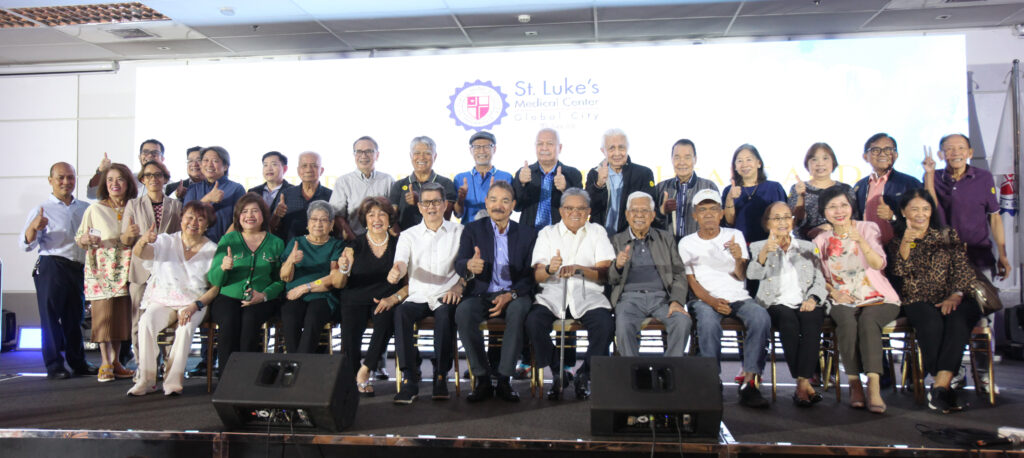Since St. Luke’s Medical Center Global City first offered in 2012 the transcatheter aortic valve replacement, plus other technologically advanced and minimally invasive procedures, some 252 patients had been saved from life-threatening diseases of the cardiovascular system.
Many of those who benefited from the pioneering medical treatment in the Philippines turned up at the launch of the hospital’s Center for Structural Heart and Vascular Interventions held on 16 January at the Henry Sy, Sr. Auditorium in its location in Taguig City. The event coincided with the 14th anniversary of St. Luke’s Medical Center Global City.
“This is what being a doctor is all about,” said Dr. Fabio Enrique Posas, an interventional cardiologist and the Center’s head, in his speech that opened with greetings to his patients. “Seeing you all walking, enjoying your lives.”
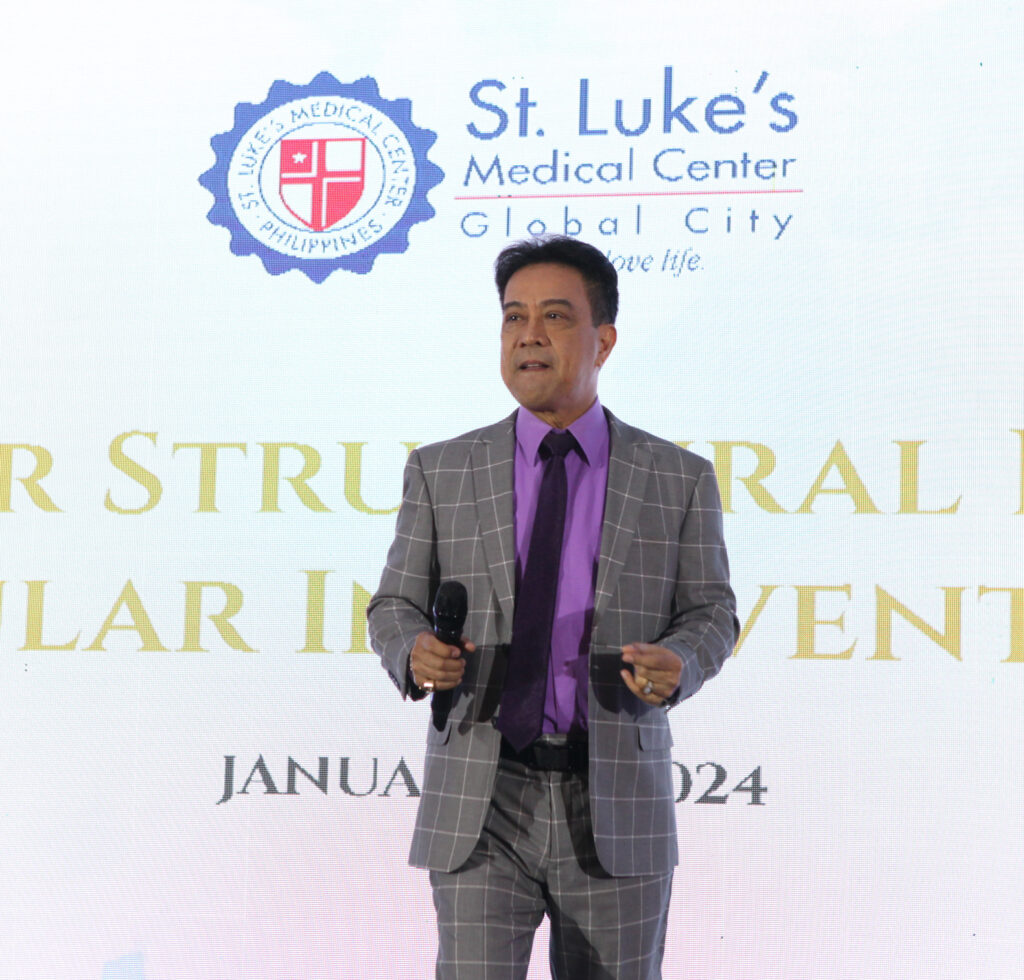
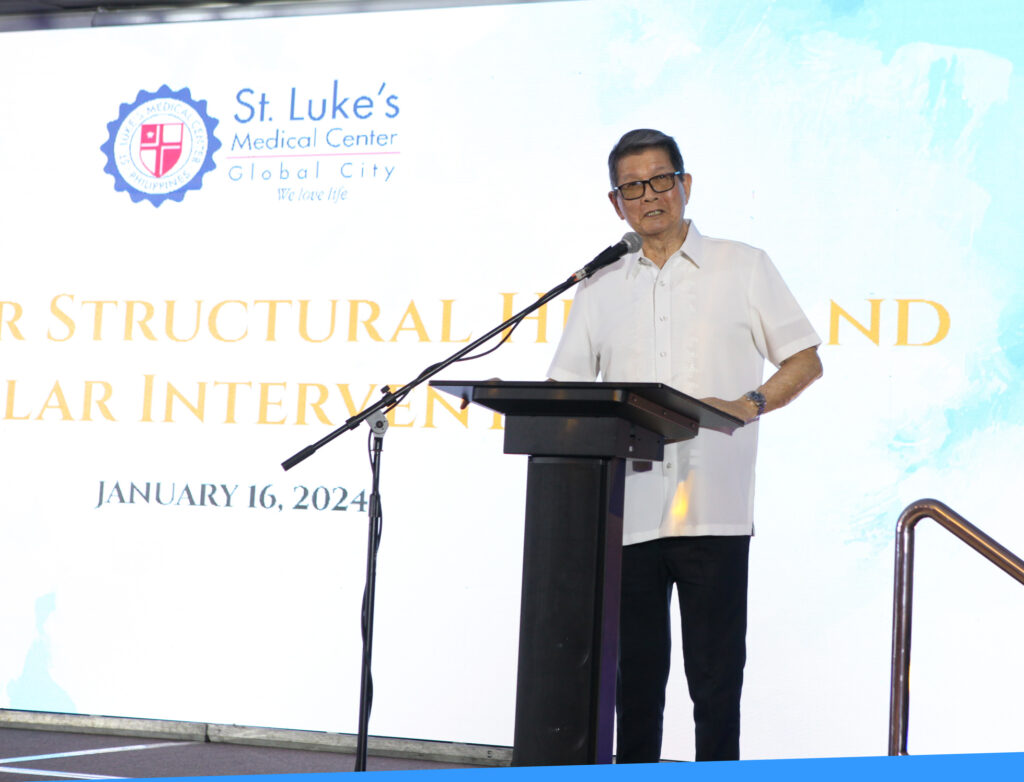
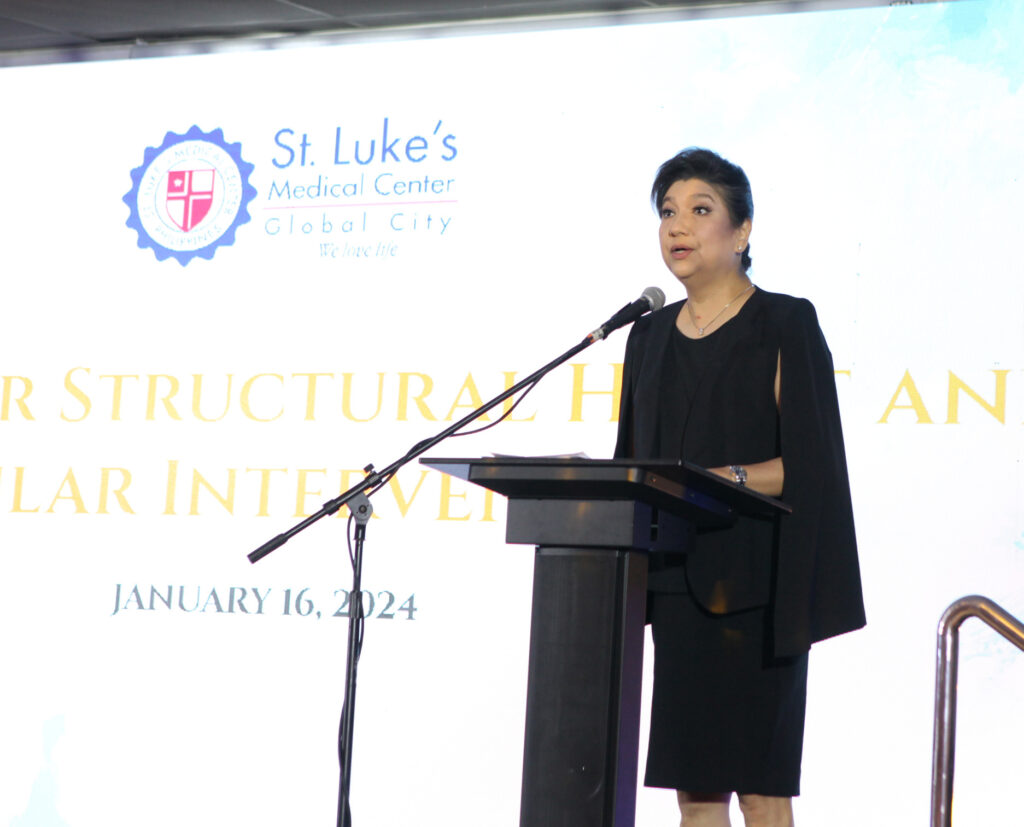
He pointed out, “The idea behind the center is to increase awareness that no Filipino dies unnecessarily because they could not recognize the disease or they could not be treated. They don’t have to fly abroad just to have those treatments because we can do them well… It is our thrust, as a center of excellence, to ensure that the primary consideration is that our patients do well.”
Two patients gave a testimonial each on how they were treated under the care of Posas, his team and the rest of the hospital staff. The first to speak was retired police and military general Renato de Villa, who underwent three surgical procedures. He proudly announced that at almost 89 years old, he’s “alive and kicking.” This is largely due to being “Exhibit A of a very, very good and trustful doctor.”
De Villa, who served as Defense Secretary during President Fidel V. Ramos’ term, shared stories, like how “Dr. Posas kept on checking on me until I was able to play golf again” and their doctor-patient relationship turned into friendship.
Another patient, Renato Eusebio, 63, recalled his experience in treating his torn chordae by Posas and Dr. Martin Martinez. “I was told about this new technology that is minimally invasive. I said, ‘Why not? ‘They just made a hole in my side, and that’s about it. June 13 was my operation, which took about five to six hours… In one to two days, I was able to sit up straight already.
“Then I went back to the room to meet with Dr. Posas. He told me I’d be out in four to five days. But unfortunately, I had pneumonia, so I had to stay longer in the hospital. But after that, everything’s okay. Right now, I’m up and about. I can sleep well. I could eat better. Everything is fine. Hindi na ako hinihingal. (I don’t pant anymore.) I just need to exercise.”
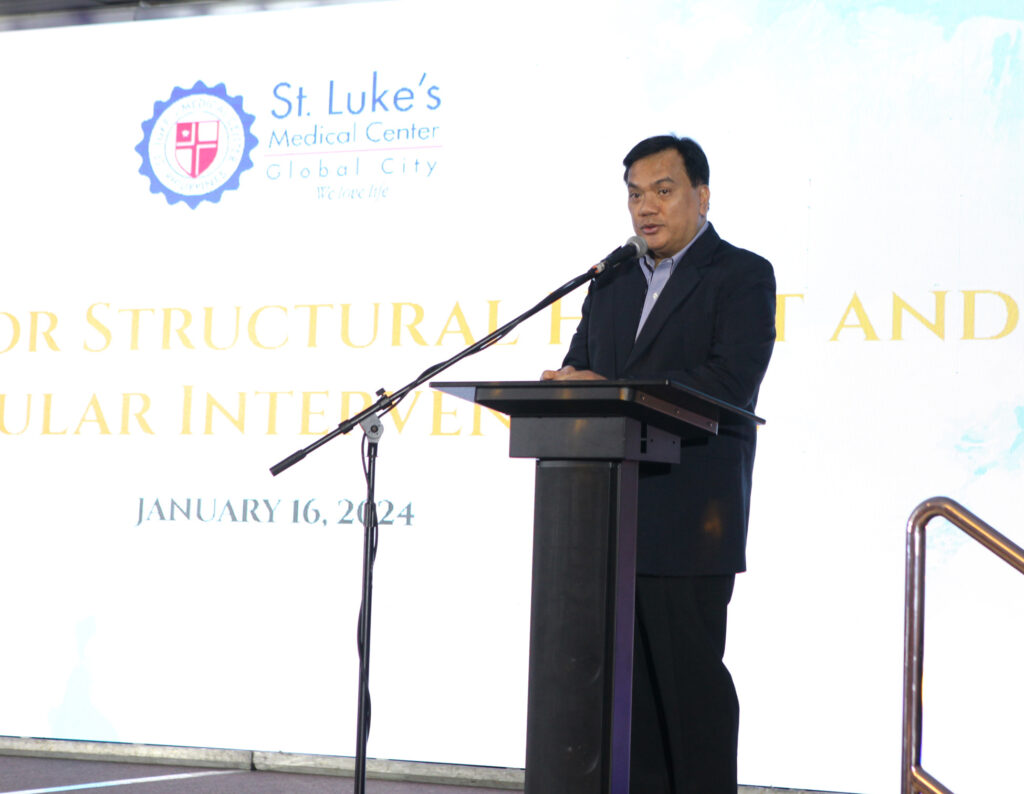

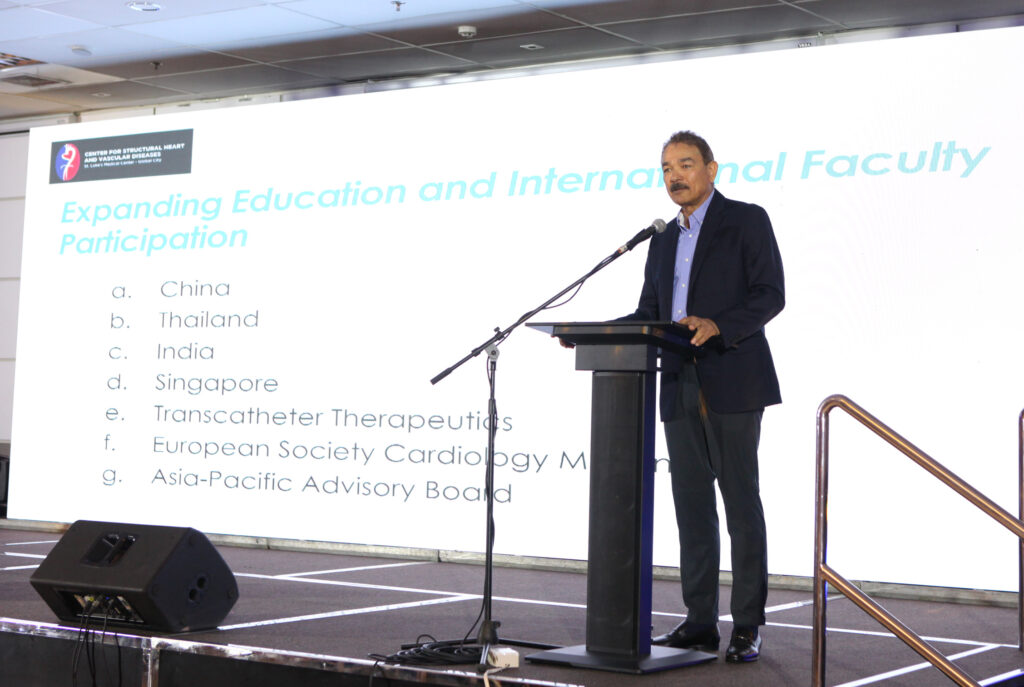
Cutting-edge facility
St. Luke’s Center for Structural Heart and Vascular Interventions promises to be “dedicated to providing exceptional, quality controlled, multidisciplinary care for patients with abnormalities of the heart, aorta, peripheral arteries, valves and its supporting structures.”
It has proven to be topnotch in performing transcatheter aortic valve replacement. This procedure uses small surgery cuts — as opposed to the long cut down the chest required in open-heart operation — and a flexible, hollow tube or device called catheter. After inserting the catheter into a blood vessel, the doctor guides it to location of the aortic valve in the heart using an imaging tool as a guide.
Other services offered include endovascular aortic repair/thoracic endovascular aortic repair; hybrid aortic arch replacements; transcatheter mitral and tricuspid valve repair and replacement; minimally invasive surgical valve repair and replacement; robotic vascular and coronary surgery; and hybrid surgical and catheter-based interventions.
“Now, we’re expanding the scope and options for care,” Posas said in the press interview that followed the event’s program proper. “Although we can do the open procedure as well, a lot of our patients cannot handle the big procedure or do not wish to have the procedures. So, we use catheters and minimally invasive surgical interventions, like the second patient testimonial who underwent a multivalve repair. The recovery is faster.”
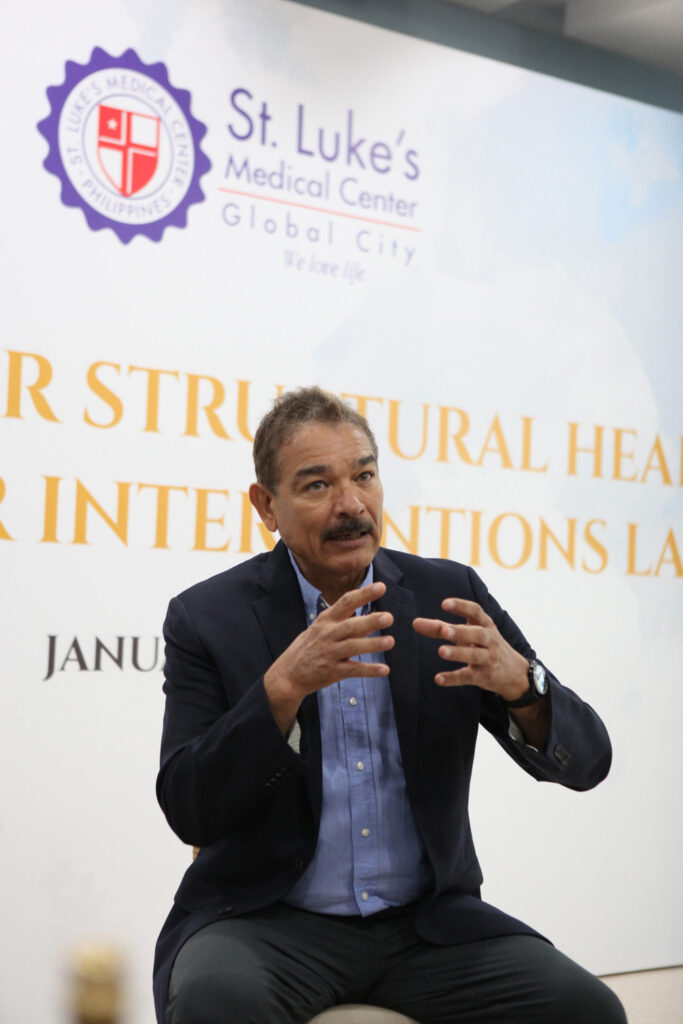
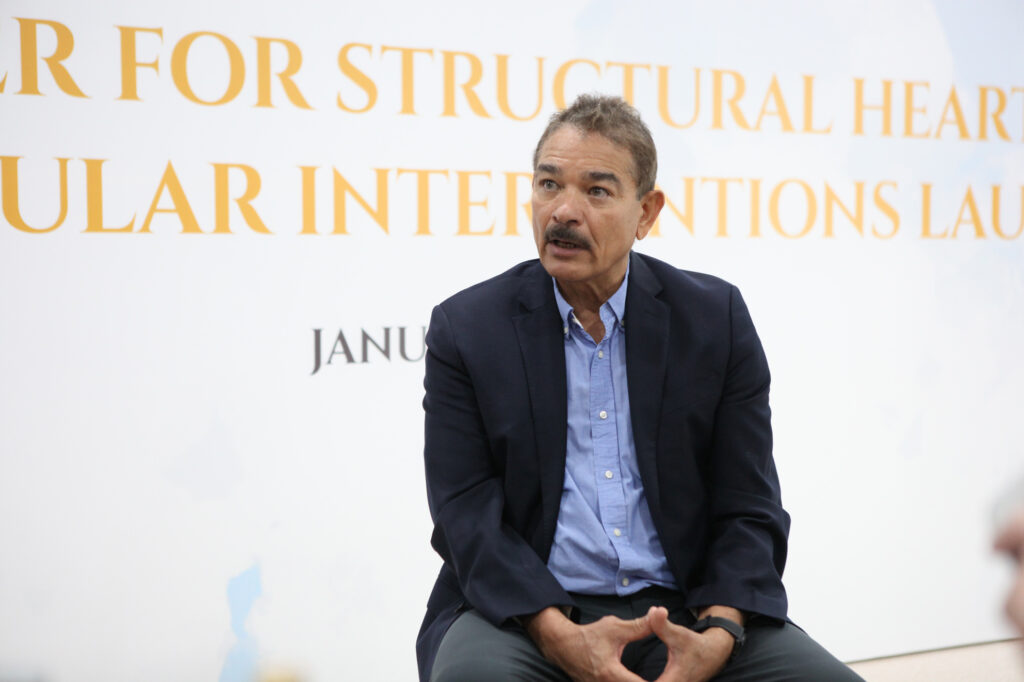
He then explained that the expansion also means reaching out to as many patients as possible. “We are developing linkages to companies that make the devices we use to try and create some sort of socialized billing, so more people can avail. In addition to that, we’re training doctors. We’ve had six fellows. The idea is to train individuals in different locations.” These include Cebu, Davao and Laguna.
“We support them,” he stated. “The long-term plan is to eventually have a free-standing program on their own. The idea is for them to copy and apply it there.”
Posas stressed that heart diseases, such as those involving the aortic valve, are typical to individuals in their 70s, though the youngest he’s operated on was a 52-year-old woman and oldest, a 97-year-old man.
“A lot of them have symptoms that may be blamed on their age,” he said, mentioning a few examples. “’I can’t climb the stairs, matanda na ’ko (I’m already old).’ They don’t realize they have a disease. There’s shortness of breath, they feel like drowning, having palpitations, etc.
“We have to realize that once these people with valve disease, there’s almost a 50 percent mortality rate within the two years. It kills more people than cancer. We shouldn’t leave them and say, matanda na sila (they’re already old). There are ways to prolongation of life and quality of life.”
